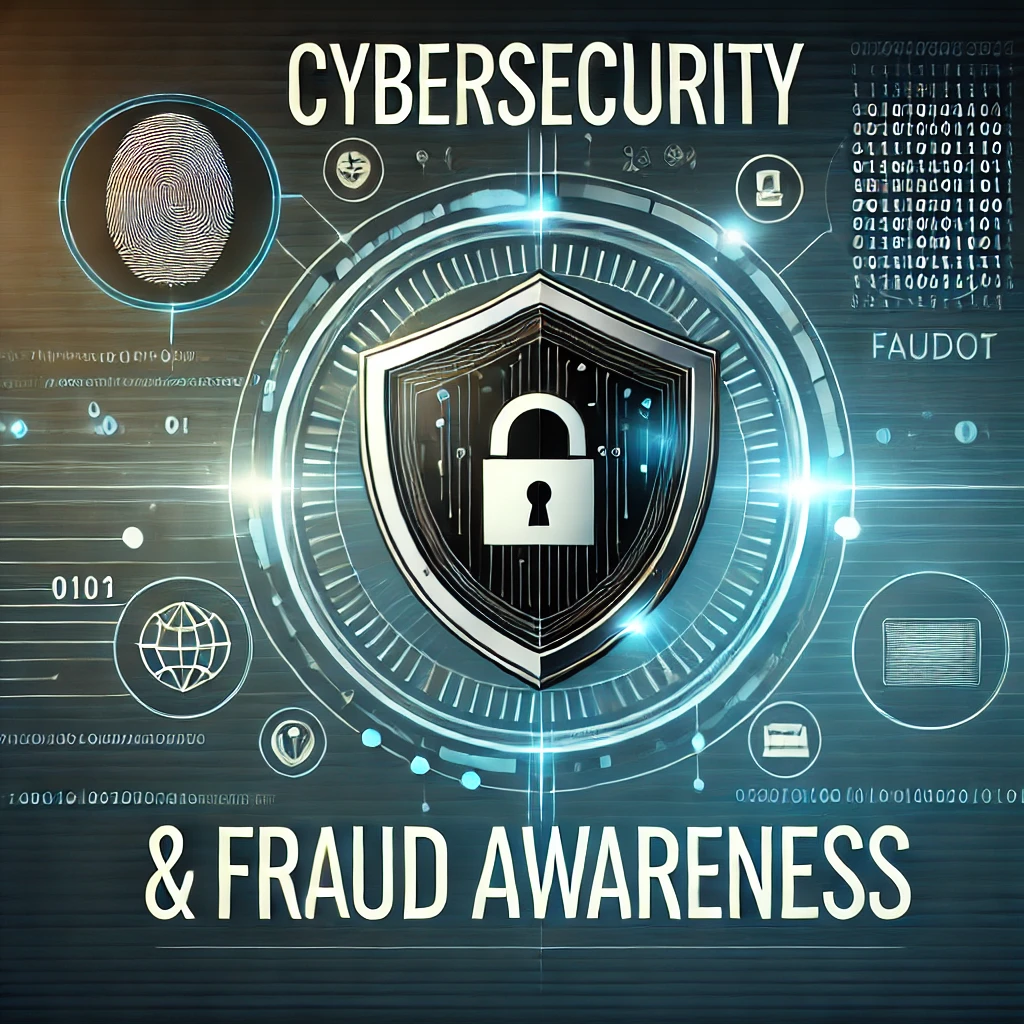Understanding Cybersecurity and Fraud Awareness

Essential Concepts with Real-World Examples
In today’s interconnected world, cybersecurity and fraud awareness have become critical for individuals and organizations alike. Threats are constantly evolving, making it essential to understand key concepts and how to defend against them. Let’s explore some of the most important cybersecurity and fraud-related challenges, complete with real-world examples to bring these concepts to life.
1. Phishing
Phishing is a classic scam where attackers pose as legitimate entities to trick individuals into sharing sensitive information like passwords or credit card numbers.
Real-World Example: An email claims to be from Netflix, warning that your account will be suspended unless you update your payment details. The link in the email directs you to a fake website designed to harvest your credentials.
How to Stay Safe:
- Verify URLs before clicking.
- Avoid sharing sensitive information via email.
- When in doubt, visit the official website directly.
2. Ransomware
Ransomware attacks encrypt files or entire systems, with attackers demanding payment (often in cryptocurrency) for their release.
Real-World Example: The 2017 WannaCry attack affected hospitals, banks, and governments, locking critical files and demanding Bitcoin ransoms. Healthcare providers were unable to access patient records, severely disrupting services.
How to Stay Safe:
- Regularly back up data.
- Keep software and systems updated to patch vulnerabilities.
- Train employees to identify suspicious emails.
3. Social Engineering
This method manipulates individuals into divulging confidential information or performing actions that compromise security.
Real-World Example: An attacker calls an employee pretending to be from IT, requesting login credentials to "resolve a system issue." The unsuspecting employee complies, giving the attacker access.
How to Stay Safe:
- Verify the identity of anyone requesting sensitive information.
- Educate employees on common social engineering tactics.
- Use two-factor authentication (2FA) to secure accounts.
4. Man-in-the-Middle (MITM) Attacks
These attacks occur when a hacker intercepts communication between two parties, often on public Wi-Fi networks.
Real-World Example: A hacker on the same public Wi-Fi network uses tools like Wireshark to capture unencrypted data, stealing login credentials or personal information.
How to Stay Safe:
- Use a VPN on public networks.
- Avoid accessing sensitive accounts on unsecured Wi-Fi.
- Ensure websites use HTTPS for secure connections.
5. Credential Stuffing
Hackers exploit stolen username-password combinations from data breaches to gain unauthorized access to other accounts.
Real-World Example: A breach reveals email credentials. Hackers then use those credentials to log in to the victim’s social media or banking accounts.
How to Stay Safe:
- Use unique passwords for each account.
- Enable two-factor authentication (2FA).
- Monitor for signs of unauthorized access.
6. Insider Threats
Threats don’t always come from external sources. Insiders—whether malicious or careless—can pose significant risks.
Real-World Example: An employee downloads sensitive customer data onto a USB drive and sells it on the dark web. Alternatively, an unintentional email error shares sensitive information with unauthorized recipients.
How to Stay Safe:
- Limit access to sensitive data based on roles.
- Monitor employee activity for unusual behavior.
- Implement data loss prevention (DLP) tools.
7. Deepfakes and Synthetic Fraud
Deepfakes use AI to create convincing fake videos or voices, while synthetic fraud combines real and fake data to create false identities.
Real-World Example: A CEO receives an audio message from their “boss” requesting a $100,000 transfer. The voice is a deepfake generated by AI, tricking the CEO into complying.
How to Stay Safe:
- Verify requests through multiple channels (e.g., phone calls).
- Avoid relying solely on digital communications for sensitive transactions.
8. Zero-Day Exploits
These are vulnerabilities unknown to the software maker and exploited by attackers before a patch is available.
Real-World Example: In 2021, a vulnerability in Microsoft Exchange servers allowed attackers to access email data from thousands of organizations before Microsoft could issue a fix.
How to Stay Safe:
- Regularly update systems to apply security patches.
- Use endpoint protection tools.
- Monitor networks for unusual activity.
9. Malware
Malware encompasses harmful software like viruses, Trojans, and worms designed to damage or exploit systems.
Real-World Example: Downloading a seemingly harmless free game from a sketchy website installs a Trojan, which records keystrokes and sends passwords to the attacker.
How to Stay Safe:
- Use trusted antivirus software.
- Download apps and files only from reputable sources.
- Regularly scan your system for threats.
10. Fraud Detection with Behavioral Analytics
Modern fraud detection systems analyze user behavior to identify anomalies and prevent fraudulent activities.
Real-World Example: Your credit card company flags a transaction from another country while your phone's GPS shows you’re at home. This discrepancy triggers an alert, preventing potential fraud.
How to Stay Safe:
- Enable transaction alerts for your accounts.
- Regularly monitor account activity.
- Use advanced fraud detection tools if managing an organization.
Final Thoughts
Staying safe in the digital world doesn’t require paranoia—just preparation. Cybersecurity and fraud awareness are about adopting good habits and leveraging the right tools to protect yourself and your organization. Understanding these key concepts can make all the difference in staying one step ahead of attackers.
Remember, cybersecurity isn’t just an IT problem—it’s everyone’s responsibility.
- Business & Entrepreneurship
- Education & Skill Development
- Technology & Innovation
- Health & Wellness
- Lifestyle & Hobbies
- Food & Beverages
- Social & Community
- Specialized Muslim-Focused
- Money & Finance
- Sports & Recreation
- Cybersecurity & Fraud Awareness
- General


